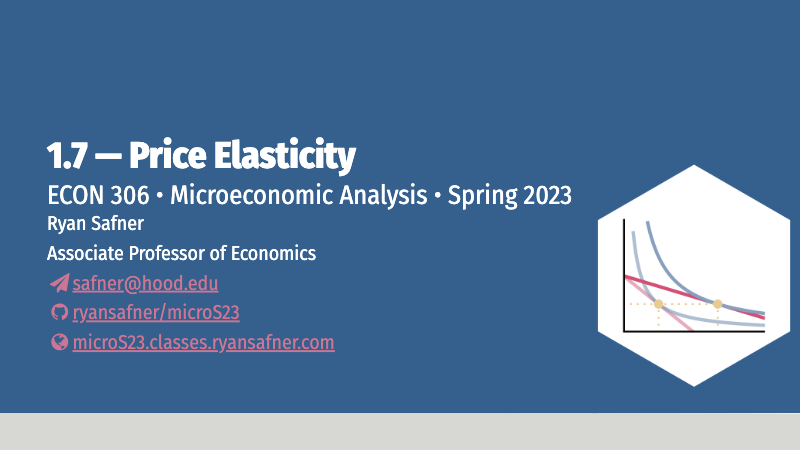1.7 — Price Elasticity — Class Content
Problem Set 2 (on classes 1.5-1.7) is due by 11:59 PM Monday February 20 on Blackboard Assignments.
Overview
Today we wrap up Unit 1 by talking more extensively about demand curves and simple demand functions (relating price and quantity demanded of a good, ceterus paribus). We also (re-)introduce the idea of price elasticity of demand that measures a person’s responsiveness in consumption to a change in that good’s price. However, unlike what you learned in principles1 we look at the elasticity of any point on the demand curve using a more useful formula:
We will look at the key relationship between price elasticity of demand and total revenue, (Total expenditure, from the perspective of the buyer.) and work on some practice problems.
Next class will be a review session for Exam 1, and you can mind more information about on the exam that page.
Readings
- Ch. 2.2, 2.5, 5.5, in Goolsbee, Levitt, and Syverson, 2019
Assignments
Problem Set 2 Due Monday February 20
Problem Set 2 (on classes 1.5-1.7) is due by 11:59 PM Monday February 20 on Blackboard Assignments.
Slides
Below, you can find the slides in two formats. Clicking the image will bring you to the html version of the slides in a new tab. The lower button will allow you to download a PDF version of the slides.
You can type h to see a special list of viewing options, and type o for an outline view of all the slides.
I suggest printing the slides beforehand and using them to take additional notes in class (not everything is in the slides)!
Footnotes
Arc-price elasticity using the midpoint between two points on the demand curve:
